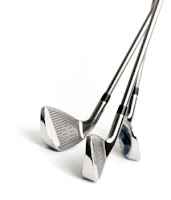She joined the KLPGA in 2006.
Sometime ago Hee Kyung Seo lived in the shadows, mainly because current world number 2, Jiyai Shin, draw attention after her surprising win at the Ricoh Women's British Open. This, with two more victories, led Shin to the LPGA, which opened the door for Seo.
In 2009, the young Hee Kyung won five championships of the KLPGA, taking over the Money List Title and becoming "Player of the Year". Seo accomplishments brought the spotlight over her because, other than Shin, she's the only South Korean that has won more events on that tour.
One of Hee Kyung's special characteristics is that she uses to come from behind to take the lead and, eventually, win the tournament, thanks to her solid game and tough mentality. An example of this came in the Korea Women's Open, a major int the Asian tour, in which she overcame a 6 stroke disadvantage to claim the title.
In the LPGA, she played her first event in 2006, the Kolon-Hana Bank Championship, where she finished 16th. Two years later she competed again in that same tournament and grabbed the 17th place. In 2009 she was part of the SBS Open field and managed to get a top 20; then she played the Kraft Nabisco Championship, but missed the cut; after this, she went back to a major, the Women's US Open, and tied for 48th; she was part of one of the most prestigious events, the Evian Masters, where she finished 30th, and finally she disputed, for the third time, the Kolon-Hana Bank Championship, where she got her best result, 15th.
Last week she received a sponsors exemption to play the Kia Classic, event that she won in-style after shooting 70, 67, 69 y 70, leaving Inbee Park 6 strokes behind. This result gave her the chance to play as a full member of the LPGA, nevertheless, Seo wants to focus on her own tour, the KLPGA. Even so, she'll play at the Kraft Nabisco Championship, which is scheduled for this week.
With this, the Asian players made clear, once again, that they are the ones to track down and the dominant group of the most competitive women's golf tour. To corroborate this, we just need to see the results in the past 3 events: in the Honda LPGA PTT Thailand five Asians figured in the top ten; in the HSBC Women's Championship there were nine among the best 10 and in the Kia Classic, seven. More over, the winners of those events are Ai Miyazato from Japan (2) and Hee Kyung Seo from South Korea (1).



























